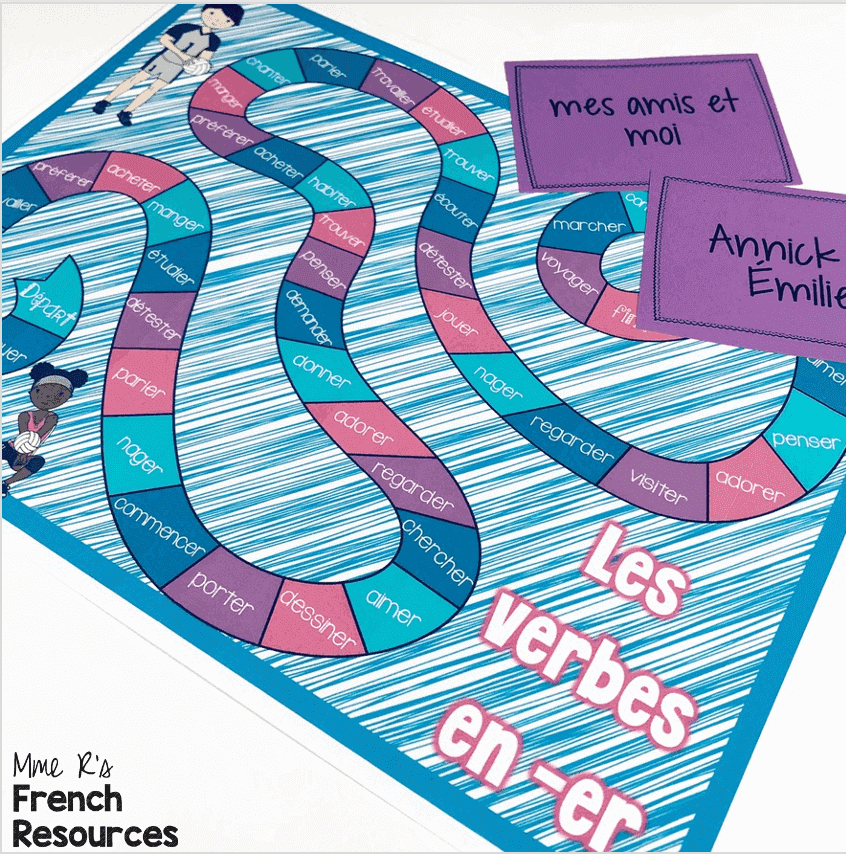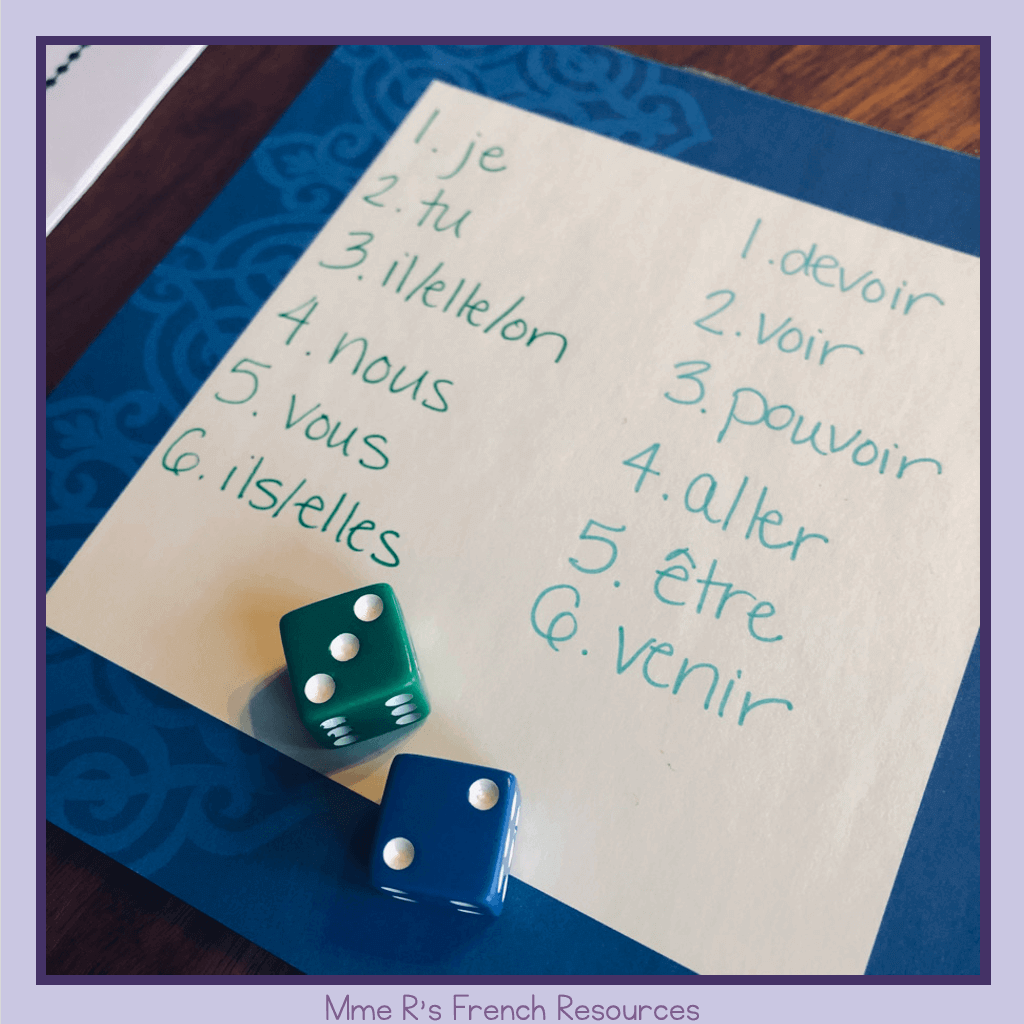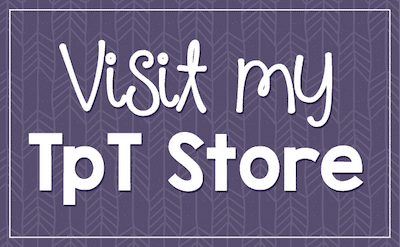How I plan a French lesson
I get a lot of emails from teachers asking for teaching advice, and I try to put those into blog posts, because I figure they probably have questions a lot of the same questions as other teachers do. One question I get a lot is : How do I plan a French lesson?
We know that kids need to be engaged and doing something with the language, but what does that look like? Here is how I break down a typical 50 minute French lesson with beginning students.
1. Start French class with a bell-ringer
I have always had a bellwork activity. It is just the most efficient way to start a French lesson, take attendance, get students ready, and quickly review yesterday’s concept before starting a lesson.
When I started teaching, I graded them all. I think I felt like if it wasn’t for a grade, they wouldn’t do it. And sometimes they wouldn’t… but that’s a different story.
As I got a little more experienced, I realized it was so much better to check them together. Did I still assign a grade? Yes, but it was mostly participation. It was easy points for them, and I could just quickly go through weekly sheets – even for 150 students – and assign a few points per week.
For my classes, bellwork typically takes under ten minutes. Depending on the length of the questions, most students can come in, get settled, and have the questions done in five minutes. We check it together, go over any questions they have, and then get ready to learn something new!
2. Warm up with some French speaking
It doesn’t have to be totally structured. You might grab a few French question cards and do a quick Q and A. You could post 5 questions on the board and have students do a turn and talk with a partner. You might put a picture on your whiteboard and have students describe it to a classmate.
The point is that they should talk everyday, in a variety of ways. A quick informal warm-up will make it easier for them to speak French during the rest of the class. Every French lesson should allow time for students to speak!
Again, this is a quick warm up, so five minutes is usually all I take.
3. Direct instruction of French grammar or vocabulary- ten minutes max!
A lot of psychologists and educational researchers have said that a typical high school student can focus for anywhere between ten to twenty minutes. For a lot of kids, that is still a lot. Remember, they have been sitting all day, and if they are in classes with mostly direct instruction, they might have been passively listening for much of the day.
Even if students are able to stay attentive and follow direct instruction for a longer period of time, language learning should be about what they can do with the language. That means less time listening and more time applying the skills, so make sure they get a lot of time to practice.
If I am teaching about French -er verbs, I will explain what it means to conjugate, show them how to do it, model the conjugations with a few verbs, then have them do 5-10 questions in their student packet. At this point, I could walk around and make sure they are doing it correctly.
Then, a few student volunteers would write the answers on the board while the others finish. We’d check them all together, and I’d answer any questions.
4. Time to practice and have fun!
I love letting students work together, and it is so much more engaging for them!
In order for students to really master the material, they have to have time to apply what they’ve learned during the French lesson. There are so many different ways to practice, but here are a few that my students always love!
Board games
After direct instruction time, I let them work in groups to play a French board game like this one. Students love these, because they can work together, it’s a game, and they can work at their own speed.
I make it harder by requiring longer sentences, writing “must-use” words on my board that they have to include in their sentences, or by telling them to create specific types of sentences (simple, complex, etc.)

On another day, we may do a no-prep dice game like this one to practice the verbs I’ve been teaching during the French lesson:

To play this game:
Just pick any verbs students are working on, and make a column on the left with subjects. You can use a mix of pronouns and names, so I also like to replace the il/elle/on and ils/elles columns with different names sometimes.
On the right, you can write a list of verbs you’re working on. I played this at home with my son to review le futur simple, but you can do it with any group of verbs and any tense.
Have students work in groups of 3 or 4, and give students two dice. If you have different colors, that’s even easier, but if you don’t, it works just fine. 🙂
Have them roll and conjugate based on what they rolled. So, for this example, he conjugated the verb voir for il/elle/on.
Make it even harder by giving students a minimum amount of words per sentence!
Other ideas for student practice:
You can play any number of fun games like Scoot, j’ai… qui a…, or bingo. You can also do a structured speaking activity like Find Someone Who or Around the Room using a set of speaking cards.
As I plan a French lesson, I always make sure to incorporate at least ten minutes of partnered or group practice so students can apply the concepts.
5. Wrap up the lesson.
There are a lot of easy ways to wrap up a French lesson.
-
End class with an exit ticket to see how much they understand. Grab FREE French exit tickets HERE.
-
If you assigned homework, give them a few minutes to start so you can answer any questions.
-
Do a quick thumbs up/thumbs down assessment by having students show you how well they think they get it.
-
Do a snowball activity. Have all students write down something they learned during your French lesson. Then, they’ll ball it up like a snowball and toss it in the air. They’ll quickly grab someone else’s paper and read it out loud – either to the class or to a partner.
When I plan a French lesson, I use appropriate time frames to maximize student engagement. Not every day has to involve a game, but students should always get a chance to apply the language in meaningful ways.
Got a question as you plan a French lesson? Leave a question for me!



KimberlyCameron says
Thank you so much for all of your ideas! I love reading what you are doing. I teach novice French to third, fourth, and fifth graders. I love to do board games with them and I ususally make them up by unit. Your board games are wonderful but a little too hard for my littles. Do you offer writeable board game templates that I can customize for my units/levels? Thank you so much for this answer and any advice for engaging elementary learners. MERCI!!
Kimberly
Ashley says
Thank you so much for your sweet words! I’m glad the ideas are helpful!
I didn’t make the board game clip art, so I’m not able to offer it as a writable game. I do have some really simple image-based games I have used with my 4th grade class that might work for you. You can see the colors game that we use here:
https://www.teacherspayteachers.com/Product/French-colors-board-game-JEU-POUR-LES-COULEURS-6436264
As for engaging younger students, have you tried Boom Cards? My son is now in 8th grade and he has used them since 2nd grade. He absolutely loves them and it’s how we practice a lot at home. I have some (but not too many) sets for young students, but there are so many French sets by elementary teachers that I’m sure would be great for your classes! Here’s a link to the Boom site if you want to check it out. 🙂
https://wow.boomlearning.com/author/mmersfrenchresources?ref=amlink
When I taught 4th and 5th, my main goal was speaking and listening, so any fun and engaging activities I could come up with were usually a big win!